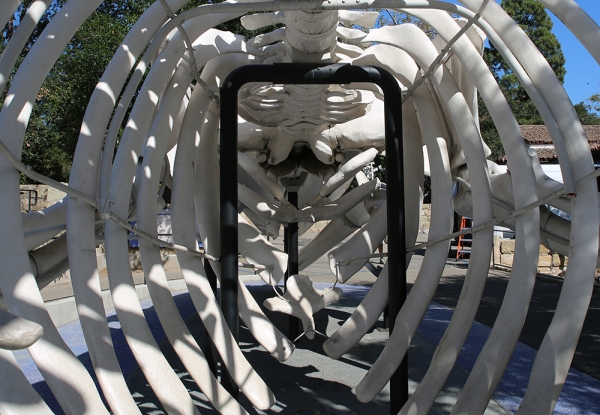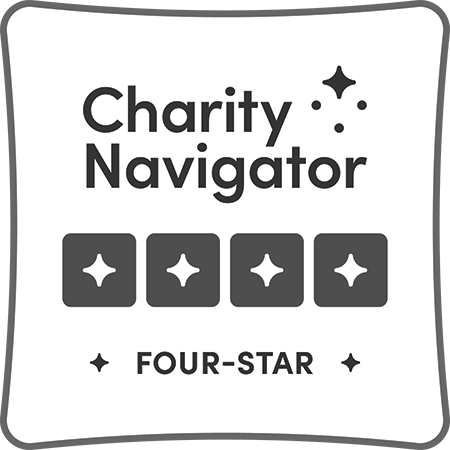Blue Whale Skeleton
One of only five complete Blue Whale skeletons in the United States
Some natural history museums have iconic dinosaur skeletons. We have a skeleton of the largest animal to ever exist on Earth – the Blue Whale. The whale is positioned as if beginning a deep dive into the water. As one of only five complete Blue Whale skeletons in the United States, the Museum’s iconic 72-foot long phenomenal specimen is more than just a noted Santa Barbara landmark, it also represents a rare opportunity for children and adults to gain first-hand exposure to, as well as an appreciation of, the world’s largest animal. Visitors enjoy walking under the skeleton and into the rib cage to experience the sheer size of these gentle giants.
Blue Whales can be found passing through the Santa Barbara Channel from July to October. Despite their massive size, the whales feed on tiny shrimp-like crustaceans called krill, consuming as many as 40 million krill per day.
The Blue Whale skeleton at the Museum weighs nearly 7,700 pounds, is 98% real bones, and is a composite of four specimens. The skull and mandibles and one of the ear bones are from two different Blue Whales that stranded in Ventura, California in September 2007; the last five tail vertebrae are cast replicas made from tail bones of a Blue Whale borrowed from the Los Angeles County Museum of Natural History, and the majority of the skeleton is from a Blue Whale that stranded on south Vandenberg Air Force Base in 1980. The process of removing those bones from the beach and bringing them back to the Museum for preparation took over six weeks. Upon arrival, Dr. Charles Woodhouse (then curator of vertebrate zoology), along with hundreds of volunteers, worked for nearly three years to clean the bones and assemble the skeleton to make it the iconic image of the Museum that it is today.
The Museum's Blue Whale skeleton is proudly named "Chad" thanks to the leadership gift of the Dreier Family. The skeleton is truly a generational icon, so Museum Trustee Doug Dreier and his family named it “Chad,” which is the middle name of the men in the Dreier Family for three generations.
Chad can be enjoyed for free from the Museum's parking lot. This exhibit is ADA accessible; visit our accessibility page for more information. Support our exhibits by becoming a Member.
The History of the Museum's Blue Whale Skeleton
Dive deep into Chad's history with President & CEO Luke J. Swetland, Curator Emeritus of Vertebrate Zoology Paul Collins, M.A., Restoration Specialist Chris Orr, and Director of Exhibits & Education Frank Hein in this recording of the Members-only program Legends of the Halls: Washed Ashore that took place on February 25, 2021.
Protecting the bones of the planet's largest species is a big job. Restoration Specialist Chris Orr describes our new process for preserving our iconic Blue Whale, one bone at a time.







